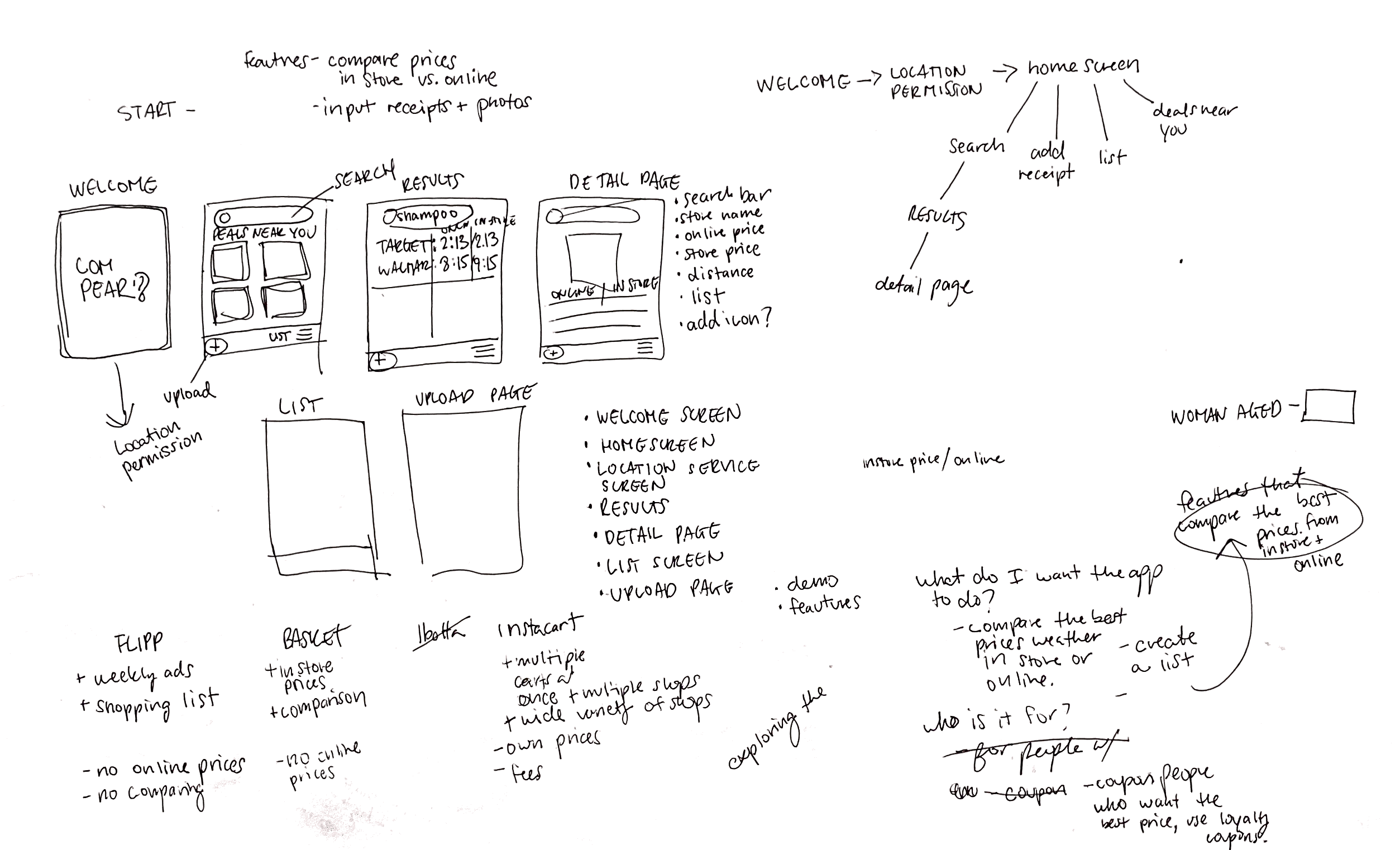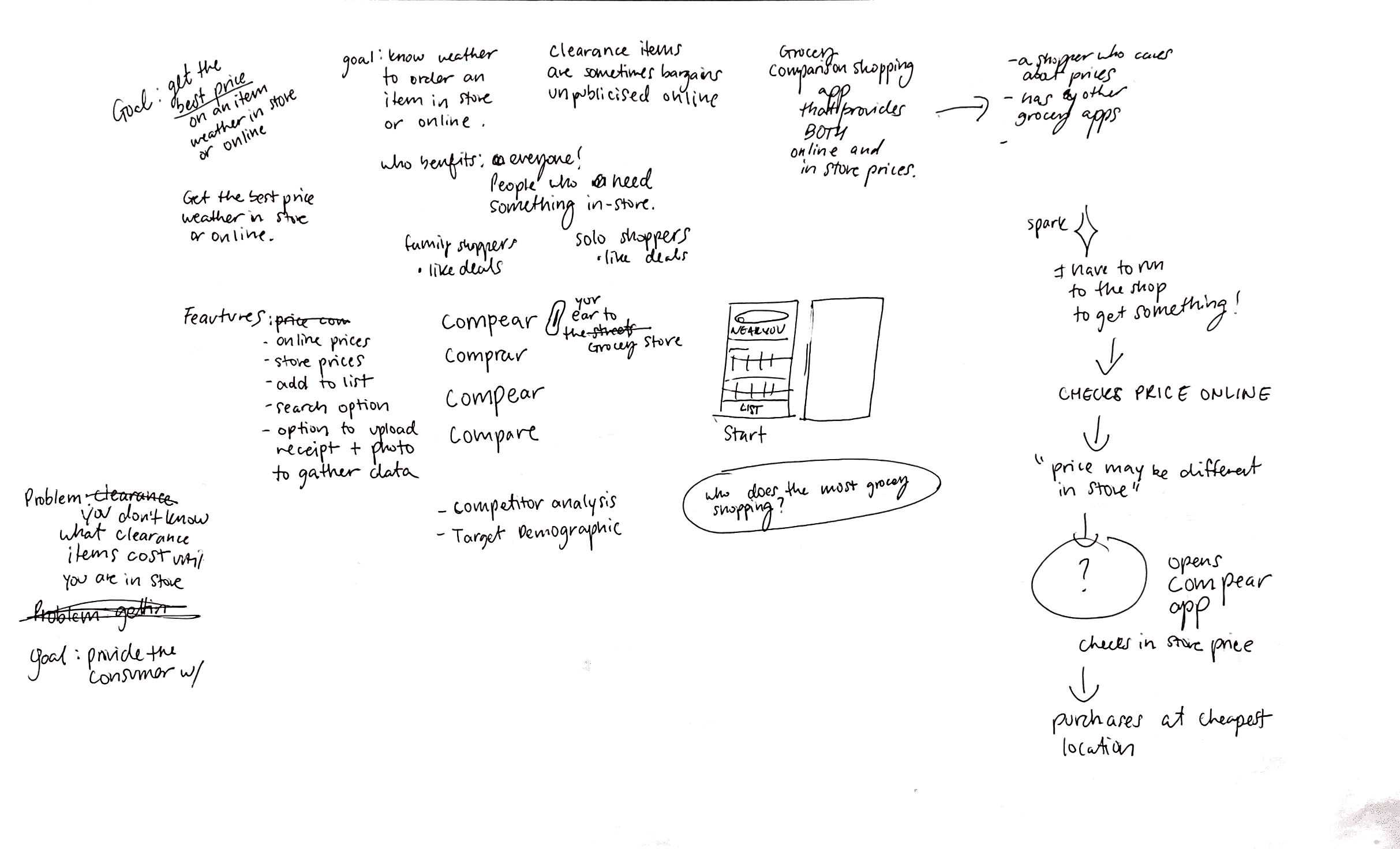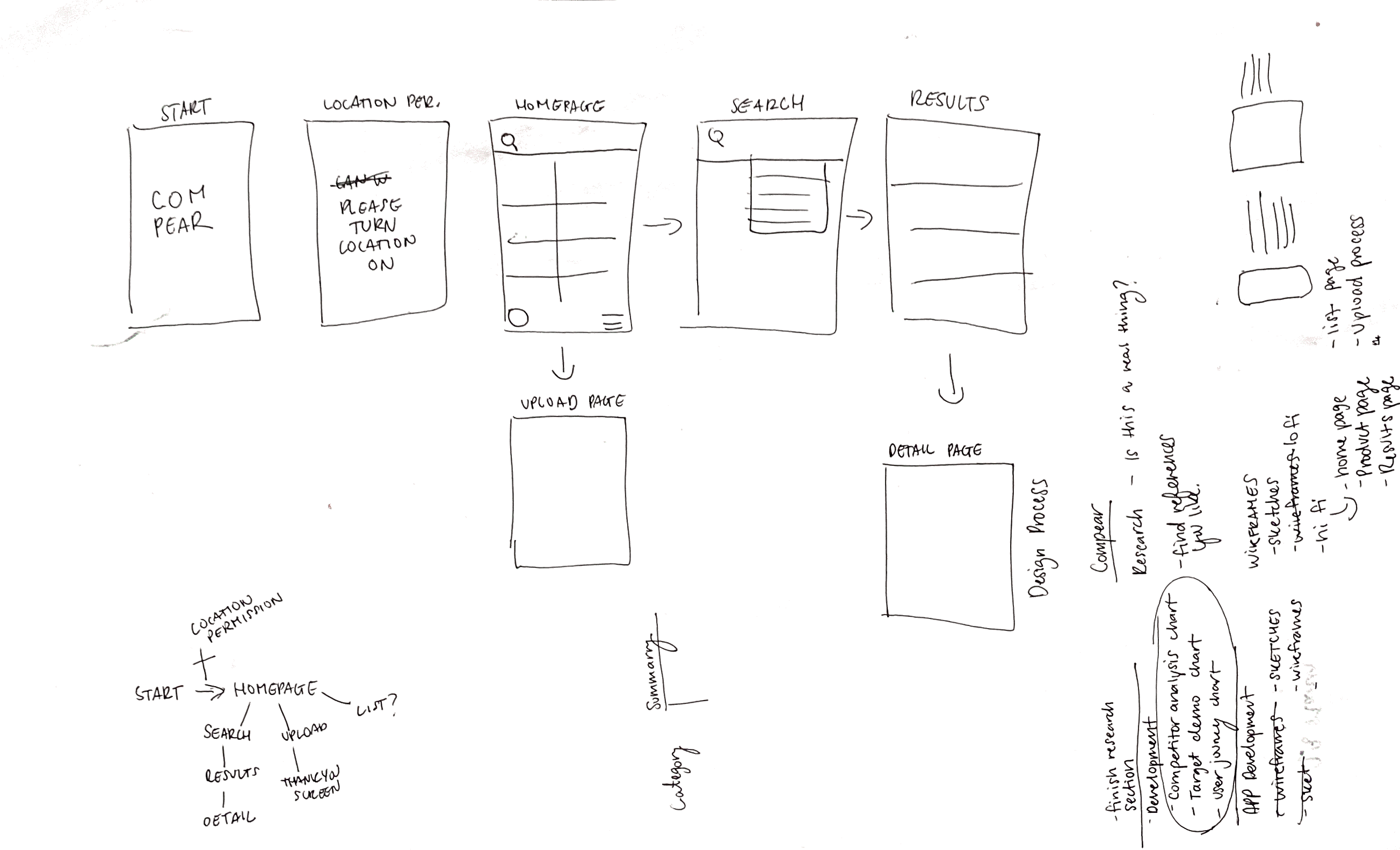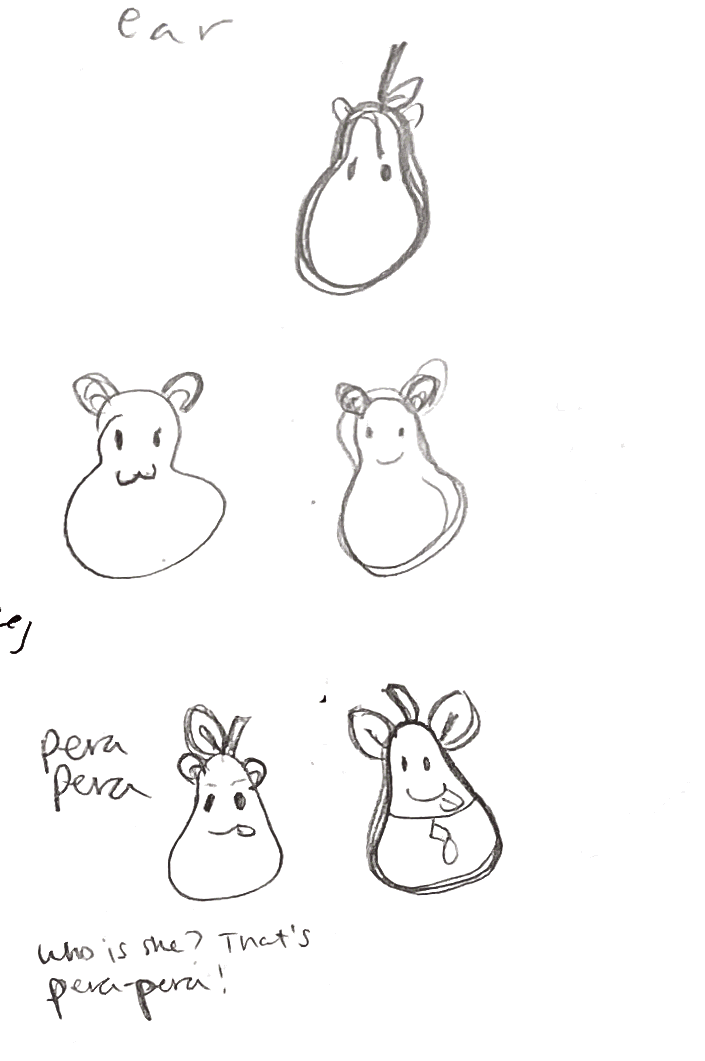Compear
Exploring price discrepancies
Type:
Medium:
Timeline
In my everyday life I noticed when I research an item I want to purchase online and go into the same store to buy it the price is different. The same exact item at the same retailer is more expensive in store than it is online and sometimes vice versa. Additionally, in store prices are not found online and simply come with a disclaimer that they may be different in-store. With this project I sought to explore these questions and provide a hypothetical solution for a better informed consumer.
Research
Multichannel pricing
It’s quite likely you have ran into the same problem as I. But what if those were just one-off situations? Sadly, they are not! Some retailers employ a strategy called multichannel pricing where the same retailer charges different prices for the same exact item across different channels such as online vs. in store. Target and Walmart directly let you know about this. But just to confirm it for myself, I have gone out to my local retailer to show an example of this first hand.



Shopping user journey

Why is this happening?
“Understanding what customers value in each channel and how that affects what they are willing to pay is the key challenge for pricing teams today. Getting it right has a real payoff: In our experience, retailers that effectively price differently across all channels see bottom line growth of 2% to 5%.” - MIT Sloan Management Review
Overall the reason for multichannel pricing is for higher profits. However there are a few other factors that come into play as well. The first one is the concept of an informed and uninformed consumer. By pricing things differently across channels the retailer is able to offset any lost revenue from an informed consumer onto an uninformed one. As for why prices may be higher in store, the retailer knows you are less likely to leave without buying what you came for and they take advantage of that.

“By price discriminating across channels, you gain a little bit by sticking consumers who visit the store with the highest price you can. People have to pay for the fact that they’re getting what they want right now while in the store.” - Elie Ofek, Harvard Business Review
Survey
Clearly I care about these price discrepancies, but does anybody else? I asked 8 people in my life to see if they were aware and if asking for a price match is something they are interested in doing.

The problem
Multichannel pricing presents a lack of transparency and aura of mystery. It’s frustrating that you can quickly check online for the price of an item and go in store to pick it up yourself and be charged more for doing so. You can attempt a self-match however that is a hoop most people don’t want to jump through. Everybody knows different retailers charge different prices. But now, one retailer can have multiple prices for the same item with no way of knowing unless you make a physical visit to store to compare. With inflation and a cost of living crisis consumers don’t need yet another thing to worry about.
My idea
An app that gathers retail online prices and crowd sources in store prices. I think the best way to approach this problem is by finding a way to present consumers with accurate data so they can make an informed decision themselves. Mitigating the mystery of in store prices and lack of transparency.
Development
Target demographic

The app is most likely to be used by the primary grocery shopper of the house who enjoys finding deals. By making it easy and accessible to use my hope is that everyone who grocery shops uses it.

Competitor Analysis

Brainstorming




Brand Guidelines

While choosing the color scheme and typeface some of the things I had in mind were reliability and trustworthiness. I wanted the brand guidelines to make the app come across as very reliable and trustworthy.
Wireframes
Lo-Fi

Hi-Fi


A note on accessibility
When designing, accessibility is not an afterthought but something that is inherently part of my design process. I follow WCAG guidelines and strive to continuously learn about best practices. I take into consideration things such as:
- font size and weight
- contrast and color
- sufficient padding for buttons
- clarity of copy
Amongst other things. My designs aren't perfect but I am dedicated to revising my designs and educating myself on how to create the most accessible and inclusive designs possible. If you see anything that looks really wrong please let me know!
Outcome

Possible next steps
Since this is a self directed project, I am aware there are a lot of steps I would have to take if I wanted to make this project a reality!
One of the first things I would do is survey and speak to a group of people who grocery shop and enjoy a bargain, since that would be the target demographic. Speaking with real people who are most likely to use the app is key to the process. Some possible next steps after that is collaborating with a developer who will ground me and conducting user testing and collecting feedback on not only the features but also the look of the app. And if time is not an issue, after that I would continue to iron out the details and fix any issues that arise.
